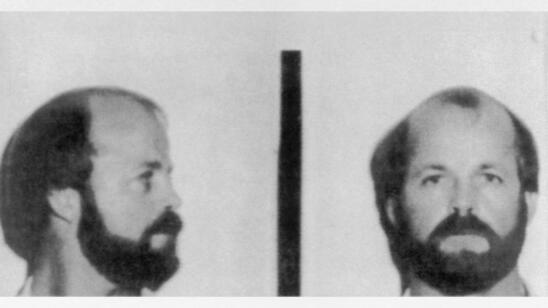Warning: The following contains disturbing descriptions of violence, including sexual violence. Reader discretion is advised.
The city of Columbus, Georgia, was terrorized by a brutal serial killer during an eight-month period from 1977 to 1978 as he raped and strangled seven women, often with their own stockings. The case went cold after the last murder in April 1978, despite a large police presence and extensive media coverage of the man dubbed “The Stocking Strangler.”
In 1984, an unrelated murder and a stolen pistol led to the arrest of Carlton Gary, a recent escapee from a South Carolina prison who was described as a “career criminal” by his own defense attorney.
Gary was convicted of three of the seven murders and sentenced to death after a single hour of jury deliberation in 1986 after a dramatic trial. He was executed by lethal injection in 2018. True crime author William Rawlings spoke with A&E True Crime in an email interview about the case, which is detailed in his book, The Columbus Stocking Strangler, debuting September 6, 2022 from Mercer University Press.
What drew you to write a book about Carlton Gary, the ‘Columbus Stocking Strangler’?
Whether writing fiction or nonfiction, one rapidly learns that what separates an interesting tale from a litany of facts is what I refer to as ‘the story.’ There needs to be a beginning, middle and an end. Conflict, mystery, surprise, as well as a protagonist and an antagonist are often vital elements. Most would agree these attributes are essential in a suspense novel. The story of The Columbus Stocking Strangler has all of these, and they are true and documented.
[Stream episodes of First Blood in the A&E App.]
What was the public’s reaction to the violent sexual assaults and murders of the women, who ranged in ages from 59 to 89?
I have often heard the period of the Strangler’s Columbus murders and the months that followed referred to by those who lived there at the time as a ‘reign of terror.’ Despite a massive police presence, the killer managed to elude identification and capture. The victims were not anonymous individuals, but rather mothers and grandmothers, fellow church members, neighbors and close friends. Everyone seemed to ask themselves ‘Could I be next?’ and ‘How and why has this monster managed to elude the police’ It was a time of unbridled but legitimate fear.
The case eventually went cold in 1978. How long did it take before authorities got a break in the case?
It would be six years before a suspect was identified and eventually captured.
The murder of a police officer by an armed robbery suspect in March 1984 led to the identification of a type of pistol similar to one stolen in a burglary that occurred at the time of the Strangler’s murders, and just houses away from the home of one of his victims. The renewed search for that pistol brought results from Kalamazoo, Michigan, which led to Gary, Indiana, which in turn led to Phenix City, Alabama, just across the Chattahoochee River from the city of Columbus, Georgia.
A man there said he had purchased the gun from his nephew, Carlton, during the time of the Strangler’s murders. That, in turn, led to a search for Carlton Gary, who was allegedly in prison in South Carolina, but it turned out that he had escaped and was, in fact, back in Columbus.
What was the prosecution’s greatest strength?
Without a doubt, the prosecution’s greatest strength was a dedicated group of attorneys and investigators who left no stone unturned in building a strong evidential and circumstantial case against the accused.
Led by [the] District Attorney, prosecutors were able to demonstrate that Gary’s crimes, not only in Columbus but also elsewhere, followed a pattern. Gary himself, in statements made to police shortly after his arrest, gave damning admissions by stating that he was at the scene of six of the seven crimes.
This was far from an open and shut case. Can you explain the allegations of misconduct on the part of both the police and judicial system?
The City of Columbus has a sad history of racial discord. As late as 1971, there were riots based on real and perceived racial discrimination. In 1977 following the first two murders that would be attributed to the Strangler, police charged a Black man named Jerome Livas with these crimes. Based on hair evidence found at the crime scenes, the killer was thought to be Black.
Livas was already in jail, having been arrested for the brutal rape and murder of his girlfriend. He allegedly confessed to the Strangler murders, as well as another rape and beating of an elderly woman attributed to the Strangler.
But Livas was illiterate and said to have limited intellectual abilities, making the legitimacy of his ‘confession’ suspect.
While he was still in jail, the case for his guilt fell apart as the Strangler’s murderous spree continued. During the more than three decades that followed… multiple appeals by a series of well-qualified defense attorneys resulted in multiple allegations of [ignored] evidence, of failure to properly fund Gary’s appeals, of conspiracy on the part of the police, prosecutors and the judicial system in general.
It should be pointed out that his appeals spanned the entire judicial system, reaching the U.S. Supreme Court a total of four times between his conviction and eventual execution.
Why did Gary commit these crimes?
The details and pattern of the crimes of the Strangler were specific and repeated. His victims were defenseless elderly white females who lived alone. They were beaten, abused, raped and then strangled—most commonly with a stocking. The bodies were then arranged in a particular manner after death.
The victims’ valuables were not taken, indicating that robbery was not the prime motivation for the attack. The uniformity of the crimes was a factor in gaining a conviction for [Gary], and also the basis of much speculation as to the causes and motivations behind his crimes. The brief answer to this question is no one knows. Although Gary admitted being present at most of the crime scenes, he alleged he was just there for a robbery and an accomplice did the killings. Questions as to how he chose his victims are unanswered and can only be the subject of speculation.
Can you share something about one of the cases that touched you emotionally?
I could not help but be touched by the murder of Mrs. Florence Scheible, an 89-year-old, nearly blind woman who could only get about with a walker.
She was often seen trying to clean up a bit in the yard of her small apartment, perhaps one of the very few joys in her life. Carlton Gary slipped in, raped and brutally beat her, breaking her neck in the process before strangling her with a stocking.
It was a particularly horrific act on the most defenseless of victims. Like many who might read about it, I thought of my own grandmother and other elderly patients I have cared for in my years of practicing medicine.
Related Features:
The Victims of Anthony Sowell, the Cleveland Strangler
How Chicago Is Trying to Solve 51 Strangulation Homicides of Women
Is There a Serial Killer in Chicago Right Now, Strangling Women and Burning Their Bodies?


